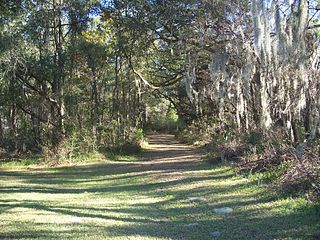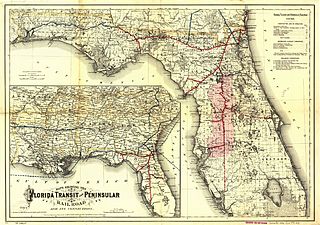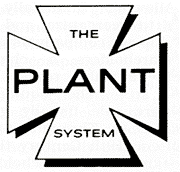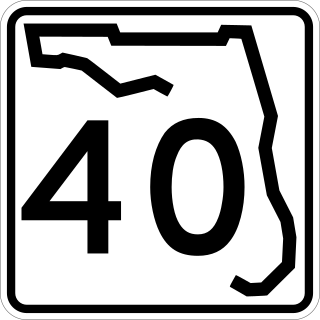Related Research Articles

The Florida East Coast Railway is a Class II railroad operating in the U.S. state of Florida, currently owned by Grupo México.

The Marjorie Harris Carr Cross Florida Greenway is a protected green belt corridor, more than one and a half miles (1.6 km) wide in places, that was the former route of the proposed Cross Florida Barge Canal. It is named for the leader of opposition to the Cross Florida Barge Canal, Marjorie Harris Carr, and was originally a U.S. Army Corps of Engineers canal project to connect the Gulf of Mexico and the Atlantic Ocean across Florida for barge traffic. Two sections were built, but the project was ultimately cancelled because of local opposition related to environmental concerns, including protecting the state's water supply and conservation of the Ocklawaha River Valley ecosystem, as well as national opposition for the costs being perceived as "government waste" with "limited national value." The greenway is part of the system of Florida State Parks, including the Santos Trail System, and is managed by the Florida Department of Environmental Protection.
The Atlantic, Suwannee River and Gulf Railroad Company was a railroad that ran westward from Starke, Florida, eventually terminating at Wannee, Florida, on the Suwannee River. It was later absorbed by the Seaboard Air Line Railroad becoming their Wannee Subdivision.

The South Florida Railroad was a railroad from Sanford, Florida, to Tampa, Florida, becoming part of the Plant System in 1893 and the Atlantic Coast Line Railroad in 1902. It served as the southernmost segment of the Atlantic Coast Line's main line. The line remains in service today and is now part of the Central Florida Rail Corridor in the Orlando metro area. The rest of the line remains under the ownership of CSX Transportation as part of their A Line.
The Florida Northern Railroad Company, Inc. is one of several short line railroads run by Regional Rail, LLC. It has connections to CSX at Ocala, Florida, running north to Lowell, Florida, and south to Candler, Florida. It was formerly run by CSX as their Ocala Subdivision.

The Ocala National Forest is the second largest nationally protected forest in the U.S. State of Florida. It covers 607 square miles (1,570 km2) of northern Florida. It is located three miles (5 km) east of Ocala and 16 miles (26 km) southeast of Gainesville. The Ocala National Forest, established in 1908, is the oldest national forest east of the Mississippi River and the southernmost national forest in the continental U.S. The word Ocala is thought to be a derivative of a Timucuan term meaning "fair land" or "big hammock". The forest is headquartered in Tallahassee, as are all three National Forests in Florida, but there are local ranger district offices located in Silver Springs and Umatilla.

The Florida Central and Peninsular Railroad was the final name of a system of railroads throughout Florida, becoming part of the Seaboard Air Line Railway in 1900. The system, including some of the first railroads in Florida, stretched from Jacksonville west through Tallahassee and south to Tampa. Much of the FC&P network is still in service under the ownership of CSX Transportation.

The Plant System, named after its owner, Henry B. Plant, was a system of railroads and steamboats in the U.S. South, taken over by the Atlantic Coast Line Railroad in 1902. The original line of the system was the Savannah, Florida and Western Railway, running across southern Georgia. The Plant Investment Company was formed in 1882 to lease and buy other railroads and expand the system. Other major lines incorporated into the system include the Savannah and Charleston Railroad and the Brunswick and Western Railroad.

The Georgia Southwestern Railroad is a Class III short line railroad company that operates over 234 miles (377 km) of track in southwestern Georgia and southeastern Alabama. Beginning in 1989 as a division of the South Carolina Central Railroad on a pair of former CSX Transportation lines, the railroad has since undergone a number of transformations through abandonments and acquisitions, before arriving at its current form. The railroad was formerly a RailAmerica property before going independent, and in 2008 it was acquired by Genesee & Wyoming Inc.

The 74-mile-long (119 km) Ocklawaha River flows north from central Florida until it joins the St. Johns River near Palatka. Its name is derived from ak-lowahe, Creek for "muddy".

State Road 40 is a 91.8-mile-long (147.7 km) east–west highway across northern and east-central Florida, running from U.S. Highway 41 (US 41) in Rainbow Lakes Estates eastwards through Ocala over the Ocklawaha River and through the heart of the Ocala National Forest to SR A1A in Ormond Beach. Names of the road include Silver Springs Boulevard in Ocala, Fort Brooks Road from Silver Springs through Astor, Butler Road in Astor, and Granada Boulevard in Ormond Beach. Former sections in Ormond Beach are named "Old Tomoka Road" and "Old Tomoka Avenue."

Withlacoochee State Trail is a 46-mile (74 km) long paved, multi-use, non-motorized rail trail in Florida located in Citrus, Hernando and Pasco counties. It follows along the Withlacoochee River and passes through the Withlacoochee State Forest. It is the longest paved rail trail in Florida.

Hubbard L. Hart was an American entrepreneur who ran the most prominent steamboat line in Florida. He augmented his business with hotels, orange groves and lumber mills, and is noted for helping the state develop as a tourist destination.
The Florida Southern Railway was a railroad that operated in Florida in the late 1800s. It was one of Florida's three notable narrow gauge railway when it was built along with the South Florida Railroad and the Orange Belt Railway. The Florida Southern was originally chartered to run from Lake City south through central Florida to Charlotte Harbor. However, with the influence of Henry B. Plant, it operated with two discontinuous segments that would be part of the Plant System, which would later become part of the Atlantic Coast Line Railroad.
The Plant City, Arcadia, and Gulf Railroad was a railroad line that once operated from Plant City, Florida, south to Welcome, a distance of about 13 miles. The line remains in service today and is owned by CSX Transportation, which it operates as their Plant City Subdivision.
The Winston and Bone Valley Railroad was a railroad line running the Bone Valley region of Central Florida. It connected to the South Florida Railroad main line near Lakeland. A vast majority of the line remains in service by CSX Transportation, who operates it today as their Bone Valley Subdivision.
The Live Oak, Tampa and Charlotte Harbor Railroad was a historic railroad in Florida chartered by railroad tycoon Henry B. Plant. It was built as an extension of Plant's Live Oak and Rowlands Bluff Railroad. Together, the two lines ran from Live Oak, Florida to Gainesville via High Springs. The lines were completed in 1884.
The Atlantic Coast Line Railroad's DuPont—Lakeland Line was a historic rail line in southern Georgia and the northern west coast of Florida. On employee timetables, the line was actually divided into the DuPont—High Springs Line and the High Springs—Lakeland Line. The line was primarily used for freight, though some passenger services ran on parts of it in Florida. While parts of the line were built as early as 1863, the full line was not complete until 1913. Parts of the line in Florida are still active today.
The Atlantic Coast Line Railroad's High Springs—Croom Line was a historic rail line in northern Florida. The line dates back to the late 1800s and was used for both passengers and freight.
References
- 1 2 Palatka Daily News. 1912.
{{cite news}}: Missing or empty|title=(help)[ full citation needed ] - 1 2 "History of the Rodman Plantation".
- ↑ From Exploitation to Conservation, A History of The Marjorie Harris Carr Cross Florida Greenway (PDF). p. 14.
- ↑ Florida Railroad Commission Records, 1918-23 yearbook. railroad statistics
- ↑ Turner, Gregg (2003). A Short History of Florida Railroads. Arcadia Books. p. 102.
- ↑ Florida Railroad Commission Records, 1924 yearbook. railroad comments